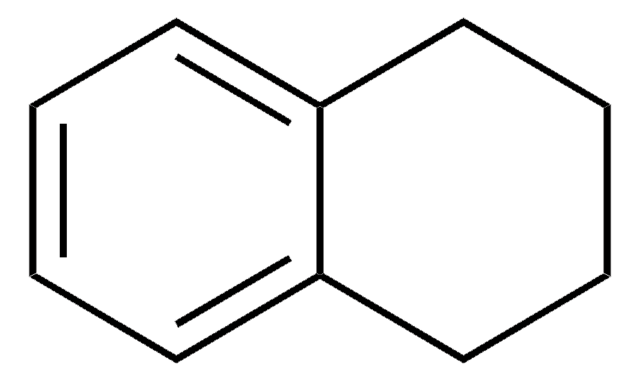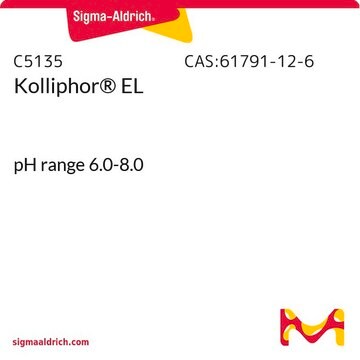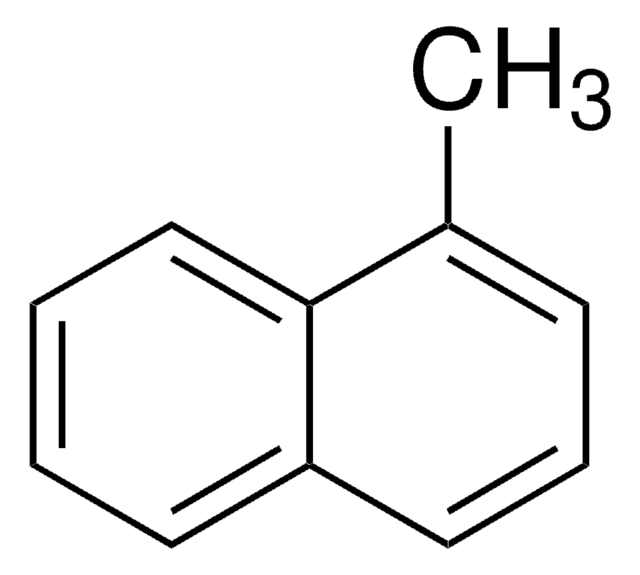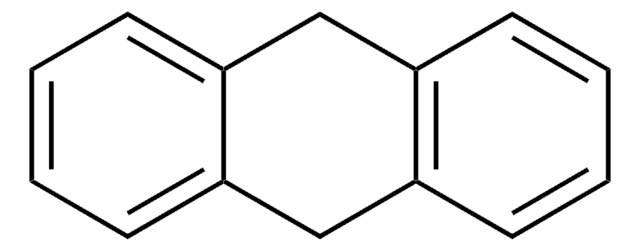Wichtige Dokumente
429325
1,2,3,4-Tetrahydronaphthalin
ReagentPlus®, 99%
Synonym(e):
Tetralin Lösungsmittel
About This Item
Empfohlene Produkte
Qualität
reagent
Dampfdichte
4.55 (vs air)
Dampfdruck
0.18 mmHg ( 20 °C)
Produktlinie
ReagentPlus®
Assay
99%
Form
liquid
Selbstzündungstemp.
723 °F
Expl.-Gr.
0.8 %, 100 °F
5 %, 150 °F
dilution
(for general lab use)
Brechungsindex
n20/D 1.541 (lit.)
bp
207 °C (lit.)
mp (Schmelzpunkt)
−35 °C (lit.)
Dichte
0.973 g/mL at 25 °C (lit.)
SMILES String
C1CCc2ccccc2C1
InChI
1S/C10H12/c1-2-6-10-8-4-3-7-9(10)5-1/h1-2,5-6H,3-4,7-8H2
InChIKey
CXWXQJXEFPUFDZ-UHFFFAOYSA-N
Suchen Sie nach ähnlichen Produkten? Aufrufen Leitfaden zum Produktvergleich
Allgemeine Beschreibung
Anwendung
Sonstige Hinweise
Rechtliche Hinweise
Signalwort
Danger
H-Sätze
Gefahreneinstufungen
Aquatic Chronic 2 - Asp. Tox. 1 - Carc. 2 - Eye Irrit. 2 - Skin Irrit. 2
Zusätzliche Gefahrenhinweise
Lagerklassenschlüssel
10 - Combustible liquids
WGK
WGK 2
Flammpunkt (°F)
159.8 °F - closed cup
Flammpunkt (°C)
71 °C - closed cup
Hier finden Sie alle aktuellen Versionen:
Besitzen Sie dieses Produkt bereits?
In der Dokumentenbibliothek finden Sie die Dokumentation zu den Produkten, die Sie kürzlich erworben haben.
Kunden haben sich ebenfalls angesehen
Unser Team von Wissenschaftlern verfügt über Erfahrung in allen Forschungsbereichen einschließlich Life Science, Materialwissenschaften, chemischer Synthese, Chromatographie, Analytik und vielen mehr..
Setzen Sie sich mit dem technischen Dienst in Verbindung.

















